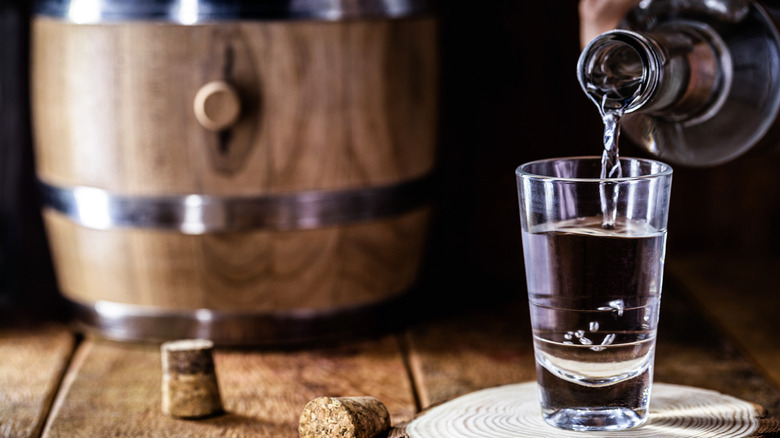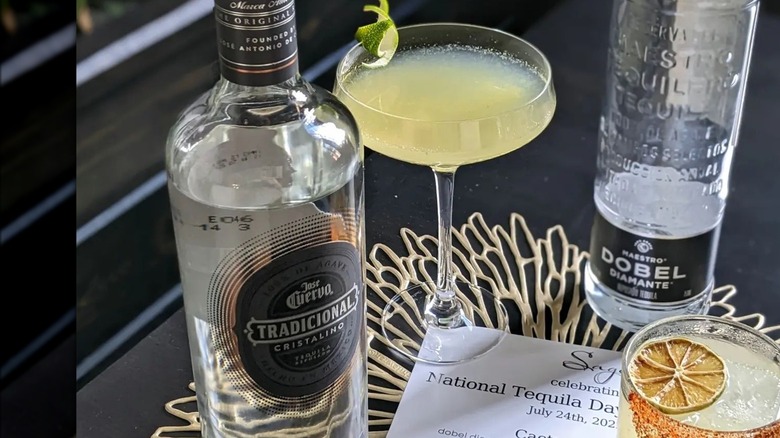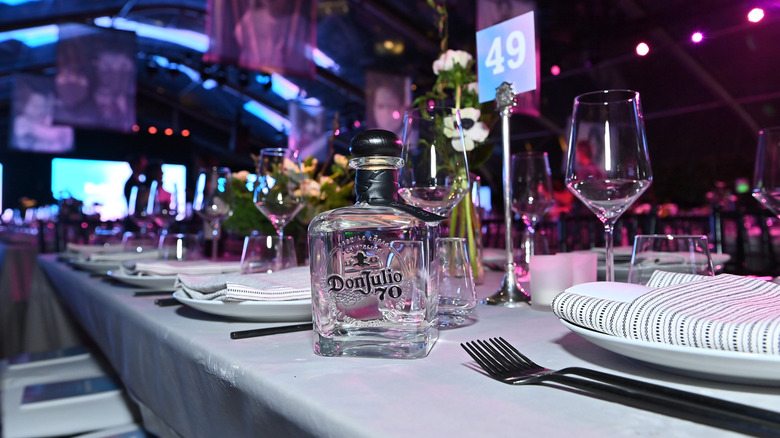The Process That Makes Cristalino Tequila Different
Shot glasses and margarita mix aside, there are now several types of tequila that are better suited to delicate glassware and sparkling water. The tequila industry's glittering high-end segment merges modern and traditional methods of making agave-based liquors, and cristalino tequila is a great example of where this shift in tequila's image — from rowdy bottle sipping to quaffing from crystal — is leading.
While it may look like tequila blanco because of its clear color, cristalino is a significantly more complex liquor when it comes to the production process and the end product. This new variety of tequila, first created in the 2000s, attempts to blend the bright notes of an un-aged tequila blanco and the different complex attributes of añejo and reposado tequila, all while sporting a crystal clear (or very lightly tinged) hue. The production step that helps cristalino achieve these lofty properties is filtration.
While charcoal is most often used in the filtration process, it isn't a prerequisite. Any filtration process that draws out the color from aged tequilas is game, allowing manufacturers to experiment with and perfect proprietary filtration methods that give their products distinctive flavors and aromas. Given tequila's rich heritage, some traditionalists are against using modern filtration techniques. However, there's no denying that such techniques, and the resultant cristalino tequila, have helped make the Mexican liquor more sophisticated and versatile.
The filtration process makes cristalino tequila different
The name refers to the tequila's clear hue, which is the most obvious effect that the filtration process has on the amber-colored, matured tequilas used to make cristalino tequila. Charcoal filtration has been used to give spirits pleasing attributes since the 1800s, with some of its earliest adopters being makers of rum and Tennessee whiskey.
For cristalino tequila, the filtration process comes after the tequila has aged. Manufacturers generally use a blend of rested, aged, and extra-aged tequilas to get a specific profile, then filter the blend to remove its color and adjust the flavor. The components filtered out from the tequila depend on the microscopic pores in the charcoal, so different types of charcoal have different effects on the tequila being filtered through. Despite its clear color, cristalino tequila is not to be confused with blanco or silver varieties which are not aged and generally cost less. If ever in doubt, check the Normas Oficiales Mexicanas (NOM) number on the tequila bottle's back label.
Filtration aims to bring some of the bright flavors associated with tequila blanco to the forefront as these notes get subdued by the aging process. Manufacturers essentially use filtration to make a tequila that retains the complexity of an aged liquor and the fruitiness of a blanco, but without the harshness that oak-aging can add.
Cristalino tequila is still evolving
While the color may be its most striking feature, the flavor profile of cristalino tequila is where the action really is. Since the liquor's regulatory body, the Consejo Regulador del Tequila (C.R.T.), doesn't recognize cristalino as an official tequila category, there are no firm guidelines overseeing the manufacturing process. This opens up a broad spectrum of potential customizations for manufacturers since they control everything from the vintage and blend of tequilas used to the specific barrels they are aged in (wine and bourbon barrels are popular), to the distillation process and even flavoring additives.
To be a cristalino, a tequila should essentially contain oak-aged tequila, undergo a filtration process to remove color, and retain at least part of the aged tequila's mature notes after filtration. In fact, the definition of a cristalino tequila is so fluid that several brands who meet the requirements above choose not to call their product cristalino, preferring a more distinctive name.
This unofficial segment offers tequila makers a whole new way to distinguish their product from the competition through a more polished, higher-end liquor. One of the first cristalino tequilas, Don Julio 70, made to mark 70 years since the famed tequila-maker's founding doesn't mention cristalino on its label, but there's no doubting what it is. However, as is expected from most cristalino tequilas, its makers recommend drinking it with just a splash of sparkling water to enjoy its soft yet complex flavors.


